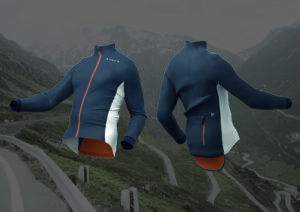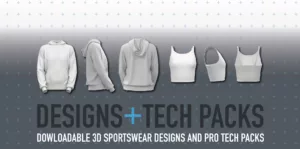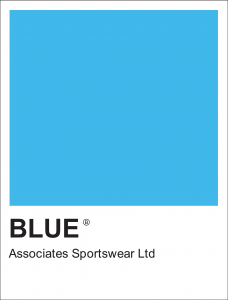
From Bloomers to Biodegradables: Navigating the 30-Year Odyssey of Sportswear Evolution
Introduction:
The history of sportswear unfolds as a captivating narrative intricately woven into the fabric of evolving sports and changing societal norms in active attire. Going beyond its utilitarian origins, sportswear stands as a symbol of identity, gender expression, and social status, leaving an indelible mark on various institutions. This transformative journey has not only enhanced athletic performance but has also profoundly influenced everyday casual attire.
1920 – Origins:
Sportswear’s roots trace back to the late 19th century, a period when advancements in female activewear set the stage for a significant metamorphosis. Early bathing and cycling costumes, designed for increased mobility, led to innovations such as shorter skirts and bloomers. Sports like tennis and croquet played pivotal roles in steering the trajectory towards specialized garments, marking the early chapters of sportswear.
1930-1945 – Pioneering Designs:
The true genesis of sportswear unfolded in pre-World War II New York, with designers Clare Potter and Claire McCardell emerging as trailblazers. Recognized for their innovative creations, their designs were characterized by problem-solving ingenuity and practical lifestyle applications. The use of practical fabrics like denim, cotton, and jersey marked this era, setting the stage for the evolution of sportswear as a distinct fashion category.
1946-1970 – Post-War Adaptations:
In the aftermath of World War II, American sportswear underwent significant evolution to accommodate diverse body shapes and ensure freedom of movement. The lifting of fabric rationing restrictions allowed designers to explore an array of fabric options, leading to the development of permanent dresses and full skirts. The commercial value of separates soared, reaching an all-time high of 30% of clothing sales in the United States. This era witnessed not only a boom in consumerism but also a shift towards casualization in dressing across various societal spheres.
1970-1990 – The Rise of Activewear:
The 1970s and 1980s saw the emergence of activewear as a distinct category within sportswear. Fitness crazes and the growing popularity of jogging influenced a shift towards more comfortable, breathable, and performance-oriented fabrics. This period witnessed the rise of iconic sportswear brands like Nike and Adidas, introducing innovations such as moisture-wicking technology and air-cushioned soles. The crossover between sports and fashion became more pronounced, setting the stage for the subsequent decades of sportswear evolution.
1990s: Basic and Practical:
The 1990s marked a significant turning point as sportswear underwent a shift, prioritizing functionality over style, with a primary focus on catering to the needs of athletes. Brands like Nike, Adidas, and Reebok led the charge, employing fabrics such as polyester designed for efficient sweat absorption, enhancing overall comfort. However, during this period, environmental considerations took a back seat as the emphasis remained on performance and practicality. The advent of high-performance fabrics laid the groundwork for advancements in sportswear technology in the coming years.
Early 2000s: Style Meets Function:
The early 2000s marked a pivotal moment when sportswear transcended its utilitarian origins, transforming into a fashion statement. Collaborations between sportswear brands and renowned designers gave rise to athleisure—a seamless fusion of sports and casual wear. Material innovations aimed at enhancing both performance and style became prominent. Personalization emerged as a key aspect, allowing athletes to customize their gear. Despite these strides, eco-friendliness remained a secondary concern as the industry was still primarily driven by fashion and functionality.
2010s: Innovation and Sustainability:
The 2010s ushered in a new era of sportswear marked by significant changes. The introduction of smart fabrics and 3D printing revolutionized the industry, enabling brands to push the boundaries of design and
functionality. A growing awareness of environmental issues prompted a paradigm shift towards sustainability. Sportswear brands began incorporating recycled materials and adopting eco-friendly production methods, aiming to strike a balance between high-performance functionality and environmental responsibility.
Present Day: Hi-Tech and Eco-Friendly:
In the present day, sportswear has reached unprecedented heights with the integration of cutting-edge technology, including artificial intelligence. Brands are increasingly committed to eco-friendly practices, incorporating biodegradable materials and actively promoting clothing recycling. The era of “smart clothes” has dawned, featuring health and performance sensors that further enhance the athlete’s experience while maintaining a focus on environmental sustainability. This holistic approach encompasses the entire lifecycle of sportswear, from design and production to the afterlife of the garments.
Conclusion:
The 30-year journey of sportswear design and production illustrates a transformative narrative extending
beyond mere athletic performance. It intertwines sports, fashion, technology, and a collective commitment to athletic excellence and planetary well-being. The dynamic evolution of sportswear encapsulates a convergence of styles, practical innovations, and a growing consciousness towards environmental responsibility. As we move forward, sportswear is poised to continually adapt, meeting the evolving needs of a society that seeks both high-performance apparel and a sustainable future. The interplay of fashion, function, and eco-consciousness will likely shape the next chapter of sportswear evolution in the years to come.




